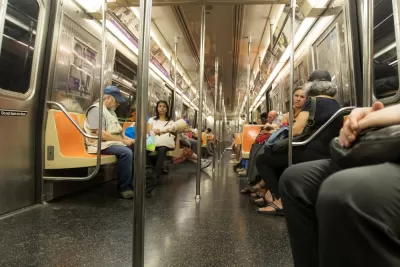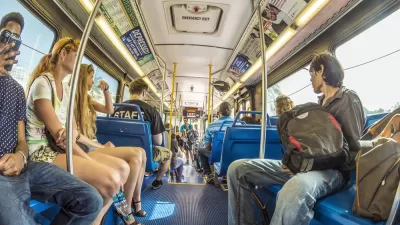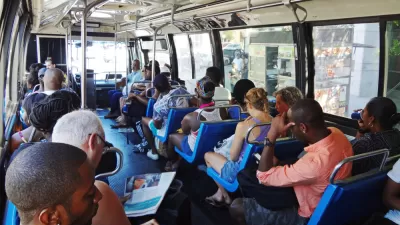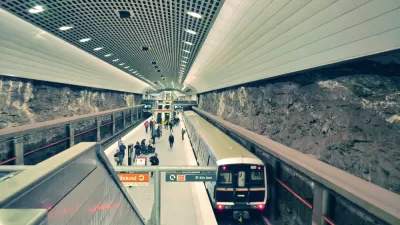A survey of public transit users indicates riders want to see more tech features that improve their experience, such as trip planning and improved payment platforms.

According to an article by Skip Descant, "[p]ublic transit riders in post-lockdown America want their buses and trains to arrive on time, with shorter wait times, and they want to be kept up to speed on crowding and cleanliness." While these might seem like basic expectations, the pandemic highlighted the gaps in transit service and, at the same time, accelerated the implementation of certain service improvements that riders will expect to continue in the post-COVID era.
A recent survey of 1,200 transit riders showed that most people "want apps or tech features to improve the transit experience. These can come in the form of real-time vehicle-crowding data, or technology that integrates trip planning across multiple modes and payment." The survey also showed that 40 percent of transit riders use two forms of transportation during their commute, while 20 percent use three forms of mobility, "making the case for better multimodal integration across transportation systems." Respondents also indicated a desire to see continued protocols to limit crowding.
"COVID-19 has shown itself to be a time of innovation across government sectors — some of it forced, while in other cases hastening trends already in place — and presents opportunities for better systems than before the pandemic, say observers." To help transit recover, transit agencies can use rider feedback on pandemic measures to inform their decisions about how to improve future service and provide "compelling options" that make it easier for commuters to ditch their cars.
FULL STORY: Transit Riders Expect Tech Improvements Post-COVID

Study: Maui’s Plan to Convert Vacation Rentals to Long-Term Housing Could Cause Nearly $1 Billion Economic Loss
The plan would reduce visitor accommodation by 25,% resulting in 1,900 jobs lost.

North Texas Transit Leaders Tout Benefits of TOD for Growing Region
At a summit focused on transit-oriented development, policymakers discussed how North Texas’ expanded light rail system can serve as a tool for economic growth.

Why Should We Subsidize Public Transportation?
Many public transit agencies face financial stress due to rising costs, declining fare revenue, and declining subsidies. Transit advocates must provide a strong business case for increasing public transit funding.

How to Make US Trains Faster
Changes to boarding platforms and a switch to electric trains could improve U.S. passenger rail service without the added cost of high-speed rail.

Columbia’s Revitalized ‘Loop’ Is a Hub for Local Entrepreneurs
A focus on small businesses is helping a commercial corridor in Columbia, Missouri thrive.

Invasive Insect Threatens Minnesota’s Ash Forests
The Emerald Ash Borer is a rapidly spreading invasive pest threatening Minnesota’s ash trees, and homeowners are encouraged to plant diverse replacement species, avoid moving ash firewood, and monitor for signs of infestation.
Urban Design for Planners 1: Software Tools
This six-course series explores essential urban design concepts using open source software and equips planners with the tools they need to participate fully in the urban design process.
Planning for Universal Design
Learn the tools for implementing Universal Design in planning regulations.
Ascent Environmental
Borough of Carlisle
Institute for Housing and Urban Development Studies (IHS)
City of Grandview
Harvard GSD Executive Education
Toledo-Lucas County Plan Commissions
Salt Lake City
NYU Wagner Graduate School of Public Service





























